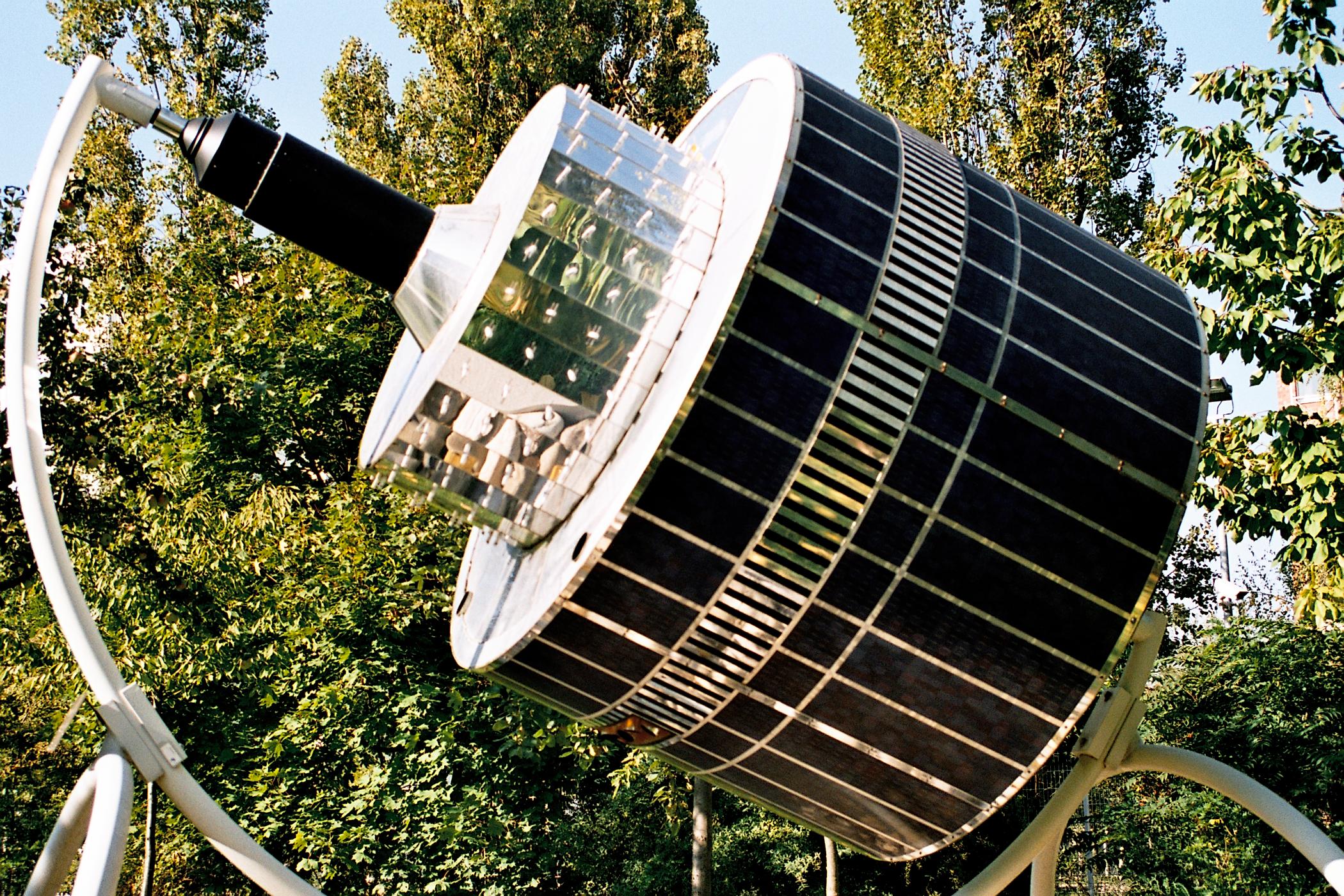|
Geostationary Earth Radiation Budget
The Geostationary Earth Radiation Budget (GERB) is an instrument aboard EUMETSAT's Meteosat Second Generation geostationary satellites designed to make accurate measurements of the Earth radiation budget. It was produced by a European consortium consisting of the United Kingdom, Belgium and Italy. The first, known as GERB 2, was launched on 28 August 2002 on an Ariane 5 rocket. The second, GERB 1, was launched on 21 December 2005, and the third, GERB3, on 5 July 2012. The last GERB 4 device was launched 14 July 2015. The first launched GERB 2 on MSG 1 is currently situated over the Indian Ocean at 41.5°E, while GERBs 1 and 3 on MSG 2 and 3 are still located over the standard Africa EUMETSAT position. GERB 4 on MSG is yet to become operational. Scientific motivations and objectives The unprecedented rate of atmospheric increase occurring since the industrial revolution due to human activity is of much concern to scientists as it has occurred an order of magnitude faster than pla ... [...More Info...] [...Related Items...] OR: [Wikipedia] [Google] [Baidu] |
EUMETSAT
The European Organization for the Exploitation of Meteorological Satellites (EUMETSAT) is an intergovernmental organisation created through an international convention agreed by a current total of 30 European Member States. EUMETSAT's primary objective is to establish, maintain and exploit European systems of operational meteorological satellites. EUMETSAT is responsible for the launch and operation of the satellites and for delivering satellite data to end-users as well as contributing to the operational monitoring of climate and the detection of global climate changes. The activities of EUMETSAT contribute to a global meteorological satellite observing system coordinated with other space-faring nations. Satellite observations are an essential input to numerical weather prediction systems and also assist the human forecaster in the diagnosis of potentially hazardous weather developments. Of growing importance is the capacity of weather satellites to gather long-term measure ... [...More Info...] [...Related Items...] OR: [Wikipedia] [Google] [Baidu] |
Timescale
Time scale may refer to: *Time standard, a specification of either the rate at which time passes, points in time, or both *A duration or quantity of time: **Orders of magnitude (time) as a power of 10 in seconds; **A specific unit of time *Geological time scale, a scale that divides up the history of Earth into scientifically meaningful periods In astronomy and physics: *Dynamical time scale, in stellar physics, the time in which changes in one part of a body can be communicated to the rest of that body, or in celestial mechanics, a realization of a time-like argument based on a dynamical theory *Nuclear timescale, an estimate of the lifetime of a star based solely on its rate of fuel consumption *Thermal time scale, an estimate of the lifetime of a star once the fuel reserves at its center are used up In cosmology and particle physics: * Planck time, the time scale beneath which quantum effects are comparable in significance to gravitational effects In mathematics: *Time-scale c ... [...More Info...] [...Related Items...] OR: [Wikipedia] [Google] [Baidu] |
NASA
The National Aeronautics and Space Administration (NASA ) is an independent agency of the US federal government responsible for the civil space program, aeronautics research, and space research. NASA was established in 1958, succeeding the National Advisory Committee for Aeronautics (NACA), to give the U.S. space development effort a distinctly civilian orientation, emphasizing peaceful applications in space science. NASA has since led most American space exploration, including Project Mercury, Project Gemini, the 1968-1972 Apollo Moon landing missions, the Skylab space station, and the Space Shuttle. NASA supports the International Space Station and oversees the development of the Orion spacecraft and the Space Launch System for the crewed lunar Artemis program, Commercial Crew spacecraft, and the planned Lunar Gateway space station. The agency is also responsible for the Launch Services Program, which provides oversight of launch operations and countdown management f ... [...More Info...] [...Related Items...] OR: [Wikipedia] [Google] [Baidu] |
Moon Gerb
The Moon is Earth's only natural satellite. It is the fifth largest satellite in the Solar System and the largest and most massive relative to its parent planet, with a diameter about one-quarter that of Earth (comparable to the width of Australia). The Moon is a planetary-mass object with a differentiated rocky body, making it a satellite planet under the geophysical definitions of the term and larger than all known dwarf planets of the Solar System. It lacks any significant atmosphere, hydrosphere, or magnetic field. Its surface gravity is about one-sixth of Earth's at , with Jupiter's moon Io being the only satellite in the Solar System known to have a higher surface gravity and density. The Moon orbits Earth at an average distance of , or about 30 times Earth's diameter. Its gravitational influence is the main driver of Earth's tides and very slowly lengthens Earth's day. The Moon's orbit around Earth has a sidereal period of 27.3 days. During each synodic period ... [...More Info...] [...Related Items...] OR: [Wikipedia] [Google] [Baidu] |

